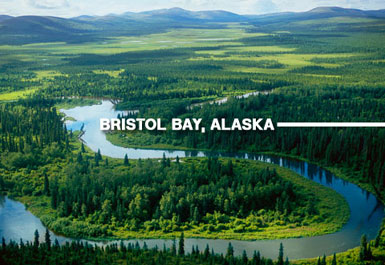by Rona Fried
In a year where we’ve seen an onslaught of accidents from oil spilling from countless trains to coal ash pouring into rivers, we add another tragedy. In British Columbia, slurry from an open-pit copper and gold mine breached a dam, sending massive volumes of toxic waste into waterways this week.
Hundreds of millions of gallons of arsenic, mercury, lead and other toxins from Mount Polley Mine gushed into rivers and lakes and it couldn’t have happened at a worse time with salmon currently on their way to spawning grounds.
Concerns about a potential breach were raised years ago with BC’s Ministry of the Environment after a study was commissioned by mine owner Imperial Metals and two native tribes.
But now there is no avoiding long-term repercussions because the damage has been done. Heavy metals settle at the bottom and can’t be completely removed, says MiningWatch Canada.
"With these types of mines, when it comes to spills and leaks, it is not a matter of if but when," says Leila Darwish, Pacific Regional Organizer for the Council of Canadians. "This spill is a warning to other communities living beside open pit mines."
There was a break in the tailing pond, which holds leftover toxic materials from metal extraction. These ponds are central to mining projects and are anything but safe and secure, say the Council of Canadians.
"These companies are gambling with our drinking water, our health and the environment. While mining companies like Imperial Metals make massive profits for 25-30 years, these projects are putting entire water systems and communities at risk. Are these massive mines really worth the risk?" asks Darwish.
The Neskonlith Indian Band has served Imperial Metals with an eviction notice for Ruddock Creek Mine – a lead and zinc mine they want to develop in their territory. It would be near the headwaters of the Adams River, an important sockeye salmon run. They are also being blocked at another mine scheduled to open this year, Red Chris Mine.
Major Warning Signal for Alaska’s Pebble Mine
A similar, but much bigger tragedy would be inevitable in Alaska if Pebble Mine is approved. This largest open-pit mine in North America – up to 2 miles long, 1.5 miles wide, and 1700 feet deep – would extract copper, gold and molybdenum in the heart of the world’s largest remaining wild sockeye salmon runs.
Not only does Bristol Bay provide half the world’s salmon, it feeds key species in what is now an intact food web.

Incredibly, the mine would be sited at the headwaters of two rivers that feed right into Bristol Bay. Huge dams would hold back an estimated 10 billion tons of contaminated mining waste. And the area is prone to earthquakes!
Thankfully, the US EPA has taken up the cause and is blocking the mine through severe restrictions under the Clean Water Act. Its own scientific assessment provides "ample reason to believe a mine of the size and scope of Pebble Mine would have significant and irreversible impacts on Bristol Bay and one of the world’s last intact salmon ecosystems."
To put the scope of the proposed mining operation in more stark terms: it would be almost as deep as the Grand Canyon and bigger than the island of Manhattan; mine waste would fill a major football stadium 3,900 times and holding areas would cover 19 square miles, says EPA.
More than a million people petitioned EPA protesting the mine: citizens, tribes, Alaska Native corporations, commercial and sport fisherman, jewelry companies, seafood processors, restaurant owners, chefs, conservation organizations, members of
the faith community, sport recreation business owners and elected officials.
And nearly 30 sustainable investor groups urged the EPA to initiate its review under the Clean Water Act.
After all this pressure, two legs of the "Pebble Partnership" pulled out – international mining giants Anglo American and Rio Tinto – leaving only mining company Northern Dynasty pushing it forward.
Read our article, Thinking Gold For Valentine’s Day?
EPA is seeking public comment until Sept. 19 and is holding public meetings in Alaska on August 12-15.
Learn more about Pebble Mine and send your comment:

The world’s worst toxic waste spill in history may kill the largest salmon run in history. The copper spilled is equivalent to nearly a trillion bottles of copper supplements from your local health food store shelves. http://russgeorge.net/2014/08/07/copper-kills-salmon-sense-of-smell/